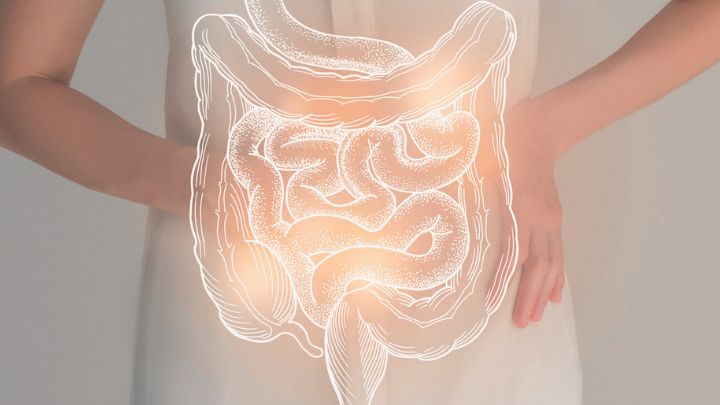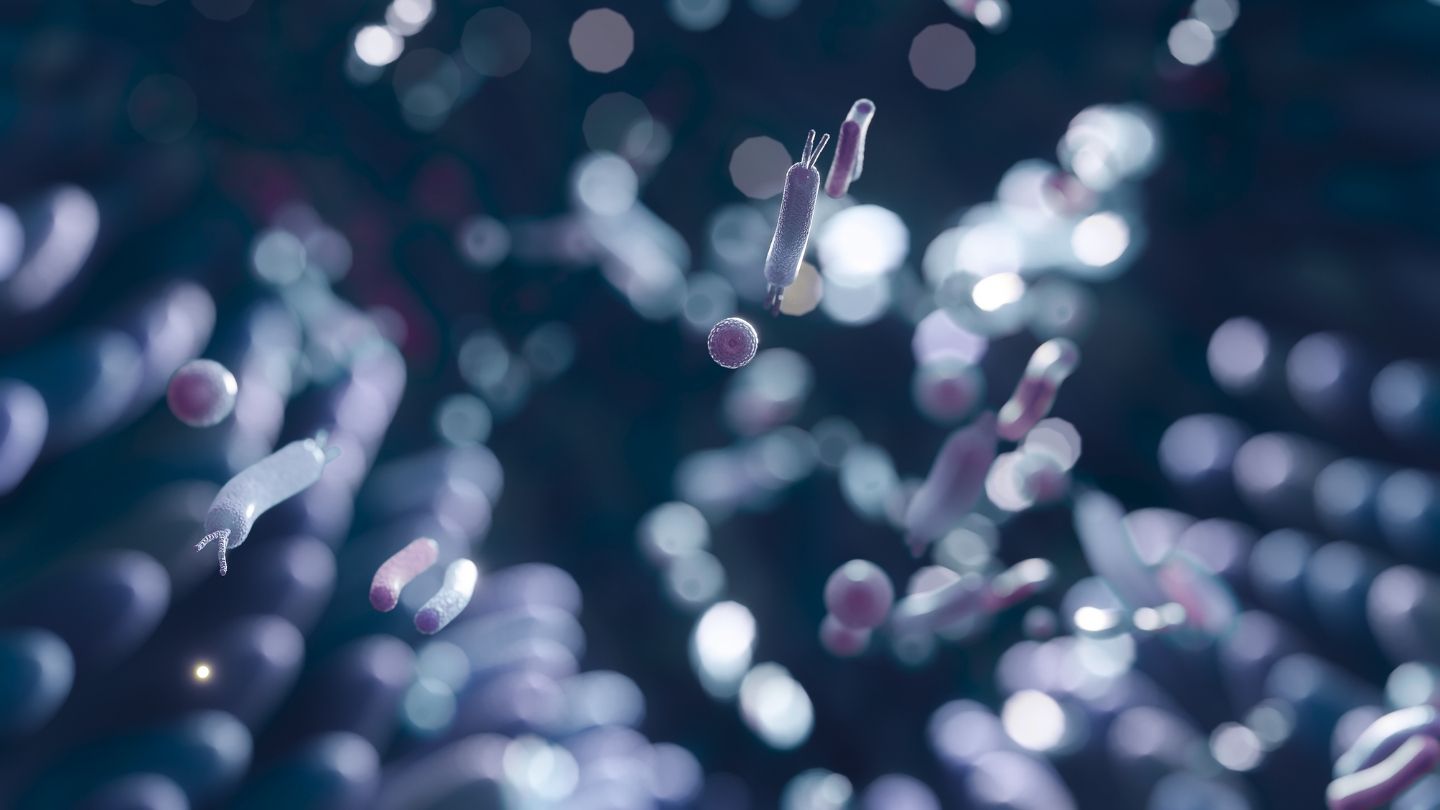Ever considered the impact of gut health on your overall well-being?
This article summarises a pivotal podcast by Steven, from “The Diary of a CEO,” featuring renowned gut expert Dr Will Bulsiewicz.
Discover insights that could transform your health and longevity.

In this article
Free guide to reverse your biological age

- Master the science of rejuvenation.
- Apply proven tips to turn back the clock.
- Transform your health with top longevity specialists.
Who is the gut doctor, Dr. Bulsiewicz?
Dr Bulsiewicz, a Vanderbilt chemistry graduate, earned his medical degree from Georgetown and completed an award-winning residency in Internal Medicine at Northwestern.
He served as chief medical resident and specialised in gastroenterology and clinical research. Currently, he is the US medical director for Zoe, focusing on clinical research.
Known as a “guts and butts” specialist, he acknowledges that the prominence of gut microbiome discussions has risen significantly since 2006, despite his extensive background.
A common misconception people have is that when they look in the mirror and don’t like what they see, or they feel unwell and bloated, they think it’s caused by something superficial or immediate. But, I believe many of these issues trace back to the gut microbiome. ”
Dr Will Bulsiewicz
Did you know that if you hold up your thumb, there are as many microbes on it as there are people in the UK?
What are gut microbes?
Gut microbes are essentially microscopic, living organisms that cover every external part of your body, particularly thriving in the colon—your large intestine.
In this prime location, you can find about 38 trillion microbes, mostly bacteria, along with fungi, parasites, and viruses.
How did the microbes get there?
It starts in your mother’s womb. Emerging evidence suggests that initial contact with microbes begins before birth, but significant exposure occurs when the water breaks.
At this point, as a baby passes through the birth canal, he or she is introduced to these microbes in what can be seen as nature’s welcoming committee.
This exposure marks the beginning of a lifelong partnership with these microbes, vital for health due to co-evolution over billions of years.
How important are they?
Humans might have existed for only a few million years, but these microbes were the first life forms on Earth.
All life, including our immune systems, evolved with these microbes. So you better not think of yourself as just one organism, but rather a superorganism, composed of trillions of these tiny life forms.
Dr Builsiewicz stresses how if these microbes were absent, humans would face severe health consequences.
They are essential for digesting food and extracting energy, training our immune system, and influencing our metabolism, mood, and even hormonal balance.
Research, including his work at Zoe, shows that microbes play a critical role in managing our responses to food, affecting everything from blood sugar to fat levels after meals.
Everyone’s microbes are different
Each person has a unique microbial landscape.
If you compare the genetic codes of two individuals, they are 99.99% identical. Yet, when it comes to the gut microbiome—the 38 trillion microbes residing inside us—the diversity is astonishing.
Let’s take identical twin brothers as an example. Despite sharing the same genes, upbringing, and often diet, research indicates that only about 25% of their gut microbes would be the same.
The variation can be even more pronounced between two unrelated individuals. Even if their diets are quite similar, their microbiomes would likely be even more different.
This vast diversity within our microbiomes begs the question: how much does our microbiome affect our health?
Gut microbiome imbalance and diseases
As a gastroenterologist, Dr Builsiewicz became deeply interested in the gut microbiome as he believed that many, if not all, of his patients’ conditions could be traced back to issues with their gut microbes.
Conditions like irritable bowel syndrome, Crohn’s disease, ulcerative colitis, and even acid reflux are often linked to microbial imbalances.
A range of other conditions are also linked to an unhealthy gut microbiome—hyperlipidemia, high blood pressure, type 2 diabetes, major depression, and autoimmune diseases.
In fact, latest findings reveal how our gut microbiome can affect everything from our metabolism and immune system to our mental health.
Link between the immune system and the gut
70% of the immune system is actually located in the gut, not, as is commonly thought, in the bone marrow. Although immune cells originate in the bone marrow, they migrate to reside within the walls of the intestine.
This is crucial from an evolutionary perspective, as the gut is our primary point of contact with the external world.
Unlike your skin, which acts as a protective barrier, your gut actively decides what to absorb into your body and what to expel.
To help this selective process, there’s a need for a physical barrier. This is where the epithelial layer comes in—a modest, yet critical, single layer of cells held together by ‘tight junctions’.

On one side of this layer is 70% of your immune system, and on the other side, the 38 trillion microbes.
When this barrier is compromised, substances from your intestines can enter your bloodstream, potentially causing infections and prompting an immune response.
A common issue in the modern word is chronic inflammation. It is often a result of this barrier breaking down, allowing elements that should be excluded to enter your body. This keeps your immune system in a constant state of alert, trying to fend off these intruders.
How do we repair this barrier? The answer lies with your microbes.
There are microbes that are essential in maintaining your gut barrier, which is replenished every 3–4 days. This turnover means the barrier you have today wasn’t there a few days ago. So, the integrity of this new barrier relies heavily on these microbes.

Whilst human cells of the gut barrier renew around every 3 days, the microbes undergo much faster turnover, replicating approximately every 20 minutes.
This rapid cycle shows the dynamic nature of our gut environment and the incredible potential for change based on our dietary choices.
Any microbe can exponentially increase its population in just a day, if given its preferred condition.
Reverse your age by 6.5 years like Ibrahim

- Explore the secrets behind Ibrahim’s transformation.
- Discover simple, proven strategies to improve vitality.
- Understand the role of supplements in reversing biological age.
Foods to improve gut health
Here’s an eye-opening fact from the introduction of his book, ‘’Fiber Fueled’’: the average person eats about 1.3 kg of food each day, which adds up to roughly 475 kg annually.
Over a lifetime, that’s about 36,300 kg of food. Compared to the tiny amounts of medication we might take, it’s clear that food is the real medicine we give our body daily.
Before a 2014 study by Warren David at Duke University, it wasn’t being emphasised enough, how human gut microbes were directly influenced by our diet.
The findings revealed that switching diets could lead to visible changes in the gut microbiome within just 24 hours, proving the gut’s resilience.
But whilst the gut can recover, it’s important not to overload it with poor food choices. Instead, balancing the diet with predominantly high-quality foods boosts gut-friendly microbes.
Think of feeding your gut microbes like watering plants—each type thrives on different nutrients. The choices you make can promote the growth of specific microbial families.
Dietary diversity, aka a wide range of plants, is beneficial for your gut health. According to the American Gut Project, incorporating about 30 different types of plants each week is ideal.
But listen. You don’t have to do drastic, unsustainable changes. Slowly increasing the number and celebrating small victories can help ensure lasting changes.
Recent studies, like one from Stanford University, show that incorporating fermented foods can significantly increase gut microbial diversity.
See every meal as a chance to improve your gut health through smart, diverse food choices. Meaning, know that you have the potential to turn a sparse microbial environment into a thriving ecosystem. This helps you boost your longevity by keeping you away from diseases.
Gut-friendly supplements
With the latest rise in technology, you can now significantly improve your gut health with probiotic supplements.
Avea, a longevity supplement company, introduces this next-generation probiotic supplement, Biomind, combining live bacteria strains with Ginseng and Vitamins B6 and B12.
he Biomind harnesses the power of advanced Duocap® technology to deliver the targeted, slow release of probiotics and nutrients effectively. This unique formulation of ingredients, supported by over 1,000+ studies, provides digestive support, mental wellbeing, and immune boosting benefits.
Experience Avea’s next-gen probiotic supplement

- 4x probiotic survival: Advanced Duocap® technology
- Targeted gut-brain support: Panax Ginseng, 10 strains (30Bn CFUs), Vitamin B6 & B12
- Backed by science: 1000+ studies
The importance of a healthy microbiome
Every living thing on Earth has a microbiome.
A single apple could carry about 100 million microbes. These microbes aren’t just passengers; they’re integral to the apple’s lifecycle, helping its growth from flower to fruit and eventually contributing to its decomposition.
We should all find comfort in the natural decay of food. It’s simply part of Earth reclaiming its resources.
Fermentation is like harnessing this natural process through controlled decay, allowing certain microbes to preserve and transform the food.
For instance, turning cabbage into sauerkraut involves nothing more than chopping it, packing it into a jar with a saltwater brine, and letting it sit in a cool place.
After a week, the cabbage transforms into sauerkraut, which is tangy and acidic, highly different to the bland canned version. This transformation is facilitated by bacteria and yeasts that not only preserve the food but enhance its nutritional profile.
Discover 20 foods to improve your gut health.
During the fermentation process, the microbes consume the food, grow stronger, and multiply, turning simple ingredients into a powerhouse of probiotics.
In Korean culture, eating kimchi daily is a common practice, providing a rich source of natural probiotics.
Microbes can also help unlock prebiotics, the components of our food that feed the microbes within us. Moreover, during fermentation, microbes release chemicals known as postbiotics, which can have various health benefits.
Prebiotics are essentially the food for microbes, probiotics are the beneficial microbes themselves, and postbiotics are the compounds produced by these microbes that benefit our health.
Discover the difference between prebiotics and probiotics.
Supplementation with probiotics can increase the effectiveness of dietary prebiotics. This synergistic effect helps to improve the balance of your gut flora and promote overall digestive health.
By consuming both prebiotic-rich foods and probiotic supplements, you can amplify the positive effects on gut health and support a healthy microbiome.
What does your poop say about your health
Examining one’s stool is similar to a cardiologist checking a patient’s pulse for cardiovascular health. As a gastroenterologist, Dr. Bulsiewicz can gauge a person’s gut health by the appearance and characteristics of their stool, as 60% of it is microbial in origin, not just expelled food.
In Zoe’s “blue poop” study, participants consumed blue-dyed muffins, and the time it took for the dye to appear in their stool (gut transit time) was measured. This simple test could predict gut microbiome health and related factors like cardiovascular risk and visceral fat levels.
Gut transit time can be a personal health metric of one’s digestive system. Clinical validation shows that transit times under 14 hours are rapid, while over 58 hours are slow, with 24 to 48 hours being the norm for most.
This variation in transit times correlates with differences in gut microbiome and dietary habits, particularly fibre intake.
High fibre consumers generally exhibit normal transit times, whilst those with low fibre intake may experience extremes.
A balanced fibre diet to regulate bowel movements is essential for a transit time close to 24 hours to maintain optimal gut health.
What should your poop look like?
There’s undoubtedly a connection between your stool appearance and your gut health.
For reference, the Bristol Stool Scale, a diagnostic tool, categorises stool based on its form— from type 1 (hard pellets, indicative of constipation) to type 7 (liquid, showing diarrhoea).
The consistency and shape of stool, influenced heavily by microbial activity in the gut, can indicate dietary adjustments needed for optimal health.
Besides, large-scale studies, like the “Big Poo Review,” involved 142,000 UK participants and aimed to better understand bowel movements nationwide.
This study and others demonstrate that consistent stool types (ideally type 3, 4, or 5, which indicate normal digestive health) correlate with a balanced gut microbiome and adequate fibre intake.

A diet rich in legumes, whole grains, fruits, and vegetables is linked to this optimal stool type. Conversely, those with diets low in fibre, or high in animal products and fats, tend to experience more extreme stool types, such as Type 1 (hard pellets, indicating constipation) or Type 7 (liquid, indicating diarrhoea).
What is a healthy poop colour?
Stool colour can be a significant indicator of health conditions. Brown stool, the norm, results from bile produced by the liver helping fat digestion.
White stool suggests a bile blockage, whilst yellow stool may indicate poor fat digestion, linked to pancreatic issues.
Green stool could be due to consuming large amounts of green vegetables or an infection like giardiasis.
The most important is to not ignore red or black stool, which can indicate serious conditions.
Red stool may suggest bleeding in the lower gastrointestinal tract, possibly from haemorrhoids or polyps, and could be an early sign of colorectal cancer.
This type of cancer is increasingly prevalent amongst younger people, potentially due to dietary shifts and microbiome changes.
Black stool might be caused by benign factors such as bismuth medication or more seriously by an upper gastrointestinal bleed, which darkens the stool due to the duration the blood spends in the intestines.
A foul odour in black stool often indicates bleeding. He strongly advises medical consultation if these colours appear, particularly red, due to the potential severity of underlying issues.
Why are fibres important?
Fibre is broken down by gut bacteria into short-chain fatty acids (SCFAs), which act as signalling molecules.
These molecules communicate with your body’s cells, influencing genetic expression and modulating immune responses.
This is particularly relevant in autoimmune conditions, where increased SCFAs can enhance T-regulatory cells that help suppress the immune system.
There has been a dramatic rise in autoimmune diseases, which have surged by 500% in the last 50 years. This has nothing to do with genetic changes, but rather the changes in diet and lifestyle that affect our microbiome.
Increasing dietary fibre isn’t as straightforward as one might hope, particularly for those who are not accustomed to high-fibre diets. Many struggle initially because the human body rely entirely on gut microbes to digest fibre; we lack the necessary enzymes ourselves.
If someone’s microbiome is compromised and unaccustomed to fibre, introducing high amounts suddenly can cause discomfort and digestive issues.
A gradual approach to increasing fibre intake is the best—start with small amounts and slowly building up over weeks or months, allowing the gut microbes to adapt and improve their fibre-digesting capabilities.
Your gut is like a muscle. It adapts and becomes more capable of handling diverse foods without discomfort, over time.
Remember, not all fibre is the same; it varies significantly between plants.
- Soluble fibre, which dissolves in liquids, predominantly feeds gut microbes and acts as prebiotic fibre.
- Insoluble fibre helps in bowel transit and has other health benefits like improving cholesterol levels.
By consuming a variety of plants, different fibres support a diverse range of gut microbes, enhancing overall gut health.
Why are faecal treatments getting famous?
Faecal transplants have been used successfully for over a decade to treat infections like C. diff, but their effectiveness in treating conditions such as ulcerative colitis has been less conclusive.
Intriguing results from smaller studies suggest that certain donors’ faecal matter might induce remission in diseases like ulcerative colitis, hinting at a future where faecal transplants could be tailored to treat specific gut-related conditions.
Faecal transplants are administered primarily through two methods. Traditionally, during a colonoscopy while the patient is asleep, the transplant material—liquefied stool—is introduced directly into the colon.
Recent advancements have allowed for the dehydration of stool, which is then encapsulated and taken orally. This new method could potentially allow individuals to undergo faecal therapy daily, drastically simplifying the process compared to the invasive nature of a colonoscopy.
Should you count calories?
Dr Builsiewicz challenges the conventional wisdom of ‘calories in, calories out’ as the sole determinant of weight loss.
Whilst acknowledging that reducing caloric intake can lead to weight loss, he points out that this approach is overly simplistic and often unsustainable.
Your body compensates by slowing metabolism, which can lead to increased hunger signals and, ultimately, weight regain. This yo-yo effect is detrimental, as lost weight often includes muscle mass, which is not regained in the same way fat is, potentially leaving a person less healthy than before.
It is more important to consider your dietary quality over mere calorie counting. High-quality, prebiotic-rich diets can improve the health of the microbiome, enhancing overall health and longevity.
Such diets activate gut hormones like GLP-1, which naturally increase feelings of fullness and help regulate appetite. Thus, you eat until you are satisfied without overconsumption.
On the other hand, an ultra-processed diet tends to increase cravings and fail to trigger fullness signals, leading to overeating and subsequent metabolic imbalance.
Is your gut microbiome inherited?
Much of your gut microbiome is inherited from your parents. There’s a profound influence that mothers have on their newborns through natural birthing methods and breastfeeding.
This initial microbial transfer is crucial for the child’s health. Disruptions to these natural processes, such as caesarean births or bottle feeding, can increase the likelihood of conditions like obesity, allergies, asthma, and autoimmune diseases in children.
Even crazier is the fact that people who share living spaces tend to have healthier gut microbiomes and share more microbes than those who live alone.
Interestingly, the quality of these relationships also affects microbial sharing; closer, more connected relationships lead to greater microbial exchange.
This suggests the significant role of human interaction in shaping our microbiome health. Despite the distractions of modern life pulling us away from direct human contact, maintaining strong personal connections can enhance gut health.
Gut health and stress
Stress can have significant physiological effects, including on our gut microbiome. Stress, whether from public speaking or deeper, chronic sources like childhood trauma, manifests in the gut, potentially leading to severe cramps or other digestive issues.
Early-life stress has been shown to alter gut microbiome, stress response, and brain function, as evidenced by functional MRI scans.
This connection suggests that unresolved emotional issues, including trauma, can impede the healing of gut-related health issues, despite optimal lifestyle habits like proper diet, sleep, and exercise.
Dr Builsiewicz shares his clinical experiences where patients only begin to see substantial health improvements after addressing and healing from past emotional traumas, highlighting the integral role of psychological well-being in overall physical health.

Reducing stress often leads to rapid health improvements, which he finds incredibly rewarding in his practice, even more so than dietary changes like increasing fibre intake.
Alcohol and gut health
Much like rubbing alcohol is used for cleaning to kill microbes, drinking alcohol can damage your gut microbiome.
The after-effects of heavy drinking, such as hangovers, are not just about dehydration but significant damage to your microbiome, leading to prolonged recovery times.
Beyond liver disease, there are various health conditions linked to alcohol consumption. So, the commonly accepted thresholds for “moderate” drinking might just in fact be excessively high.
A pivotal study, monitoring levels of bacterial endotoxin, or lipopolysaccharide (LPS), (which should not be present in the bloodstream) was quite revealing to Dr Builsiewicz.
Its presence indicates damage to the gut barrier and results in inflammation, potentially leading to severe illness.
The study found a direct correlation between blood alcohol levels and LPS levels, rising and falling together, showing the immediate inflammatory impact of alcohol consumption on gut health.
Even minimal amounts of alcohol could harm your gut microbiome.
The brain gut connection
Now, you can’t talk about the gut without talking about the brain. Our gut and brain are in constant communication, a connection that is fundamental to our overall health.
Studies reveal that 95% of the body’s serotonin, often called the happy hormone, is produced in the gut, not the brain as commonly assumed.
This serotonin affects mood, energy levels, and focus, and communicates with the brain via the vagus nerve, which acts as a direct communication line between the gut and the brain.
50% of dopamine, known as the reward hormone, is also produced in the gut, alongside over 30 other neurotransmitters.
The gut also produces metabolites like postbiotics which can cross the blood-brain barrier and influence brain functions such as mood and focus.
A study of increased short-chain fatty acids in children’s diets, showed significant improvement in their focus. This shows the importance of dietary fibre in supporting mental and cognitive health through its production of beneficial gut metabolites.
The best diet for gut health
Dr Builsiewicz’s trick? He suggests focusing on what he terms “F goals” to frame his dietary advice.
Each letter represents a key food category beneficial for gut health:
- F for fruits, which he believes are unjustly criticised yet crucial for preventing diabetes and helping weight loss, and fermented foods to enhance microbial diversity.
- G for greens and unrefined grains rich in fibre and nutrients.
- O for Omega-3-rich seeds like chia and flax, as well as walnuts.
- A for aromatics such as onions and garlic, which support heart health and cancer prevention.
- L for legumes, which he labels the ultimate superfood due to their extensive health benefits, including reduced risk of heart disease and cancer.
Last but not least, gut health and sex life
Did you know that a healthy gut microbiome directly influences libido and hormonal balance?
Gut bacteria impact hormone regulation, with specific microbes like the estrobolome managing estrogen cycles in women and similar bacteria affecting testosterone in men.
Conditions such as erectile dysfunction and polycystic ovary syndrome are also connected to gut health, suggesting that gut microbes play a pivotal role in managing and potentially rectifying these issues.
Gut microbes could also influence interpersonal attractions, affecting pheromones and potentially guiding social interactions and mate selection.
Dr Builsiewicz suggests that compatibility might even extend to microbial compatibility, impacting how individuals perceive each other’s scents and overall attractiveness.
This theory is supported by studies indicating that people with a healthy microbiome might appear more physically attractive, as good health often enhances one’s outward appearance.













